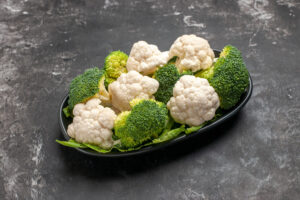Introduction:
In the world of culinary delights, few things evoke as much nostalgia and satisfaction as pickles. These crunchy, tangy treats have endured through generations, gracing tables and tantalizing taste buds with their timeless appeal. But beyond their delicious flavor, pickles carry a rich tapestry of cultural significance and historical roots. From ancient civilizations to modern day kitchens, the practice of pickling has been a cornerstone of food preservation. In fact, the art of pickling dates back thousands of years, originating as a practical solution to the challenge of preserving food beyond its peak freshness. Pickles became a culinary staple, allowing communities to enjoy seasonal produce long after harvest time had passed. The historical significance of pickling extends far beyond mere sustenance. Across cultures and continents, pickles have held symbolic importance, often representing prosperity, fertility, and even good luck. In many traditions, pickles are a staple at celebratory feasts and ritual gatherings, underscoring their cultural resonance and culinary versatility. But perhaps what truly sets pickles apart is their ability to transcend time and place, bridging the gap between past and present. In today’s fast paced world, where convenience often trumps tradition, the allure of homemade pickles harkens back to simpler times, offering a taste of authenticity amidst a sea of mass produced fare. In essence, pickles represent more than just a culinary delight; they embody a connection to our collective heritage and a testament to the ingenuity of human creativity. As we delve into the world of pickles recipes, let us not only savor the flavors but also appreciate the timeless traditions that have shaped them.
Exploring Classic Pickle Recipes:
Let’s dive into the world of classic pickles recipes, where tradition meets taste in a harmonious blend of flavors and techniques.
Traditional Dill Pickles:
Origins and Flavor Profile:
Dill pickles, with their distinctive tangy flavor and crisp texture, have roots that trace back centuries. The use of dill weed, garlic, and vinegar gives these pickles their iconic taste. Originally hailing from Eastern Europe, particularly Germany and Russia, dill pickles quickly became a beloved staple in many cuisines worldwide.
Recipe:
Creating your own batch of traditional dill pickles is a rewarding endeavor. Here’s a basic recipe to get you started:
Ingredients:
Fresh cucumbers (Kirby or pickling cucumbers work best)
Fresh dill weed
Garlic cloves
White vinegar
Water
Kosher salt
Peppercorns
Optional: mustard seeds, coriander seeds, red pepper flakes
Instructions:
1. Wash and dry the cucumbers thoroughly. Cut off the blossom end of each cucumber, because it has enzymes that may cause mushy pickles.
2. Combine equal parts in a big pot white vinegar and water. Add kosher salt and bring the mixture to a boil, stirring until the salt dissolves.
3. Meanwhile, prepare your jars by washing them sterilising them in boiling water and washing them in hot, soapy water.
4. Place a sprig of fresh dill and a peeled garlic clove at the bottom of each jar. Add any optional spices you desire.
5. Pack the cucumbers tightly into the jars, with a headspace of approximately 0.5 inches at the top.
6. Pour the hot vinegar solution over the cucumbers, ensuring they are completely submerged. Seal the jars tightly.
7. Allow the pickles to cool to room temperature before transferring them to the refrigerator.
8. Let the pickles ferment in the refrigerator for at least 48 hours before enjoying.
Bread and Butter Pickles:
Sweet and Tangy Flavor Profile:
Bread and butter pickles offer a delightful contrast of sweet and tangy flavors, making them a popular choice for sandwiches and snacks. Originating in the United States during the Great Depression era, these pickles were a creative a strategy to stretch few resources and enhance flavour in humble meals.
Recipe:
Here’s a classic recipe for making homemade bread and butter pickles:
Ingredients:
Slicing cucumbers
Onion
Apple cider vinegar
White sugar
Brown sugar
Mustard seeds
Celery seeds
Turmeric
Kosher salt
Instructions:
1. Thinly slice the cucumbers and onion, either by hand or using a mandoline slicer.
2. In a large pot, combine apple cider vinegar, white and brown sugar, mustard seeds, celery seeds, turmeric, and kosher salt. Simmer the mixture while stirring to ensure that the sugar is dissolved.
3. Add the sliced cucumbers and onion to the pot, stirring to coat them evenly with the vinegar mixture.
4. Allow the cucumbers and onions to simmer for a few minutes until they are just tender.
5. Using a slotted spoon, transfer the pickles and onions to sterilized jars, packing them tightly.
6. Pour the remaining vinegar mixture over the pickles, ensuring they are completely covered.
7. Seal the jars tightly and allow theBefore refrigerating, allow the pickles to come down to room temperature.
8. Bread and butter pickles are best enjoyed after a few days of refrigeration, once the flavors have had a chance to meld.
Kosher Pickles:
Cultural Significance and Preparation:
Kosher pickles hold a special place in Jewish culinary tradition, adhering to strict dietary laws outlined in the Torah. These pickles are prepared with kosher salt and undergo a process of fermentation rather than relying on vinegar, resulting in a uniquely tangy and complex flavor profile.
Recipe:
Here’s a recipe for making authentic kosher pickles at home:
Ingredients:
Kirby cucumbers
Fresh dill
Garlic cloves
Kosher salt
Water
Pickling spices (optional)
Instructions:
1. Wash the cucumbers thoroughly and trim off any stems or blemishes.
2. In a large bowl, dissolve kosher salt in water to create a brine solution. One tablespoon of salt for every cup of water is the recommended ratio of salt to water.
3. Place a layer of fresh dill and garlic cloves at the bottom of a clean, sterilized jar.
4. Pack the cucumbers tightly into the jar, leaving about an inch of space at the top.
5. Cover the cucumbers with the brine, making sure they are completely submerged. Add pickling spices if desired.
6. Seal the jar tightly and store it at room temperature for about a week, allowing the cucumbers to ferment.
7. Once the pickles reach your desired level of tanginess, transfer the jar to the refrigerator to slow down the fermentation process.
8. Enjoy your homemade kosher pickles as a tasty snack or accompaniment to your favorite deli sandwich.
Reinventing Classic Pickle Recipes:
Let’s delve into the realm of reinventing classic pickles recipes, where innovation meets tradition to create exciting new flavor combinations.
Spicy Sriracha Pickles:
Introducing a Modern Twist:
Spicy Sriracha pickles offer a fiery kick that elevates the classic pickle experience to new heights. By infusing the brine with bold Sriracha sauce, these pickles deliver a perfect balance of heat and tang, appealing to adventurous palates seeking a flavor sensation.
Recipe:
Here’s how to make your own batch of spicy Sriracha pickles:
Ingredients:
Fresh cucumbers (Kirby or pickling cucumbers)
Sriracha sauce
Rice vinegar
Water
Sugar
Kosher salt
Fresh dill
Garlic cloves
Instructions:
1. Begin by washing and drying the cucumbers, then slicing them into spears or rounds.
2. In a saucepan, combine equal parts rice vinegar and water, along with a tablespoon of sugar and kosher salt. Stirring constantly, simmer the mixture until the sugar dissolve and salt are fully dissolved.
3. Remove the brine from heat and allow it to cool slightly before adding a generous amount of Sriracha sauce to taste. To suit your taste, turn up or down on the spice.
4. Place a few sprigs of fresh dill and a couple of peeled garlic cloves into each sterilized jar.
5. Pack the cucumber slices tightly into the jars, making sure they are secure but not too compressed.
6. Pour the Srirachainfused brine over the cucumbers, making sure they are completely submerged.
7. Seal the jars Seal firmly and keep chilled for a minimum of 24 hours to enable the flavours to combine.
8. Enjoy your spicy Sriracha pickles as a zesty addition to sandwiches, salads, or charcuterie boards.
Maple Bourbon Pickles:
Exploring Sweet and Savory Fusion:
Maple bourbon pickles offer a tantalizing blend of sweet maple syrup, robust bourbon, and tangy pickle brine. This innovative twist on classic pickles brings a touch of sophistication to any culinary affair, making them the perfect accompaniment to cheese platters or gourmet sandwiches.
Recipe:
Here’s how to whip up a batch of maple bourbon pickles:
Ingredients:
Slicing cucumbers
Maple syrup
Bourbon
Apple cider vinegar
Water
Kosher salt
Mustard seeds
Whole cloves
Cinnamon sticks
Instructions:
1. Begin by slicing the cucumbers into rounds or spears, depending on your preference.
2. In a saucepan, combine equal parts apple cider vinegar and water, along with a generous splash of bourbon and maple syrup. Add kosher salt, mustard seeds, whole cloves, and cinnamon sticks to taste.
3. Reduce the mixture’s heat to a simmer stirring until the salt is fully dissolved and the flavors are well combined.
4. Place a few cucumber slices into each sterilized jar, along with any desired spices or aromatics.
5. Pour the hot maple bourbon brine over the cucumbers, ensuring they are fully submerged.
6. Seal the jars tightly Then keep chilled for a minimum of 48 hours to let the flavours develop.
7. Serve your maple bourbon pickles alongside your preferred recipes, or savour them immediately from the jar for a gourmet snack.
Korean Kimchi Pickles:
Embracing Global Influence:
Korean kimchi pickles offer a tantalizing blend of spicy, sour, and umami flavors, drawing inspiration from the rich culinary tradition of Korea. By incorporating traditional Korean ingredients such as Napa cabbage and Korean chili paste, these pickles deliver a punch of flavor that is both bold and refreshing.
Recipe:
Here’s how to make quick and easy Korean kimchi pickles at home:
Ingredients:
Napa cabbage
Korean chili paste (Gochujang)
Rice vinegar
Sugar
Kosher salt
Garlic cloves
Ginger
Green onions
Instructions:
1. Begin by thinly slicing the Napa cabbage aand transferring it to a sizable mixing basin.
2. In a separate bowl, combine Korean chili paste, rice vinegar, sugar, kosher salt, minced garlic, grated ginger, and chopped green onions to create the pickling brine. Adjust the seasoning to taste.
3. Pour the brine over the sliced Napa cabbage, using your hands to massage it making sure they are thoroughly coated, into the cabbage leaves.
4. Transfer the kimchi mixture to sterilized jars, firmly applying pressure to eliminate any air pockets.
5. Seal the jars tightly and allow the kimchi pickles to ferment for 24 to 48 hours at ambient temperature, depending on the degree of fermentation.
6. Once fermented, transfer the jars to the refrigerator to slow down the fermentation process.
7. Enjoy your homemade Korean kimchi pickles as a flavorful condiment or side dish, adding a burst of Koreaninspired flavor to any meal.
With these innovative pickles recipes, youcan set off on a crossborder gastronomic journey and traditions, tantalizing your taste buds with bold new flavors and exciting combinations. Thus, put on your work gloves, grab your supplies, and let the pickling revolution begin!
Tips for Pickle Perfection:
Let’s delve into the realm of perfecting your pickles recipes, where attention to detail and technique can make all the difference in achieving pickle perfection.
Tips for Pickle Perfection:
Achieving the Perfect Texture and Flavor:
1. Choose the Right Cucumbers: Opt for fresh, firm cucumbers that are specifically labeled for pickling, such as Kirby or pickling cucumbers. These varieties have a higher water content and firmer texture, ideal for crisp pickles.
2. Mind Your Slicing: Pay attention to the thickness of your cucumber slices or spears. Thinly sliced pickles will ferment more quickly and develop a more intense flavor, while thicker slices may retain more crunch.
3. Don’t Skip the Salt: Salt plays a crucial role in the pickling process, not only for flavor but also for texture. Be sure to use kosher salt or pickling salt, as iodized salt can impart a bitter taste to your pickles.
4. Experiment with Seasonings: Get creative with your pickling spices and aromatics. Fresh herbs like dill, garlic, and peppercorns are classic choices, but don’t be afraid to try unconventional additions like coriander seeds, mustard seeds,or perhaps the zest of a citrus fruit for further flavour depth.
Ingredient Selection and Brine Preparation:
1. Quality Ingredients: Use the freshest, highestquality ingredients available. Fresh cucumbers, organic herbs, and highquality vinegar will yield superior results.
2. Balance the Brine: Achieving the perfect balance of acidity, sweetness, and saltiness in your brine is key to a delicious batch of pickles. Taste your brine before pouring it over your cucumbers, adjusting the seasoning as needed.
3. Consider the Vinegar: Experiment with different types of vinegar to customize the flavor of your pickles. While white vinegar is traditional, you can also try apple cider vinegar, rice vinegar, or even champagne vinegar for a unique twist.
4. Proper Brine Ratio: Aim for a brine ratio of about 1 part vinegar to 1 part water, with salt and sugar added to taste. This will guarantee that your pickles are stored correctly and flavorful without being overly acidic or salty.
Proper Storage Methods:
1. Sterilize Your Jars: Properly sterilizing your jars before filling them with pickles is necessary to keep your pickles fresh longer and avoid infection. Before sterilising the jars in boiling water or putting them through a dishwasher cycle, wash them in hot, soapy water.
2. Refrigeration is Key: Once your pickles are ready, be sure to store them in the refrigerator to halt the fermentation process and preserve their crisp texture and fresh flavor. Properly refrigerated pickles can last for several weeks or even months, though for the greatest flavour and texture, they should be consumed within a few weeks.
3. Keep Them Submerged: To prevent spoilage and maintain quality, ensure that your pickles are fully submerged in brine at all times. Use weights or nonreactive lids to keep the pickles submerged, especially if they tend to float to the surface.
Conclusion:
In closing, it’s evident that pickles recipes hold a special place in the culinary world, bridging the past and present with their timeless appeal and endless potential for reinvention.Throughout this journey, we’ve explored the rich history and cultural significance of classic pickles, from traditional dill to bread and butter, and even kosher varieties. We’ve embraced innovation with modern twists like spicy Sriracha and maple bourbon pickles, and celebrated global influence with Korean kimchiinspired creations.But beyond the recipes themselves, what truly makes pickling special is the opportunity for experimentation and creativity. Whether you’re a seasoned home cook or a novice in the kitchen, there’s endless room for exploration and discovery in the world of pickles.So I encourage you to roll up your sleeves, gather your ingredients, and embark on your own pickling adventure. Whether you’re inspired by tradition or eager to chart new culinary territory, there’s no limit to the delicious possibilities awaiting you.And remember, the beauty of pickling lies not only in the flavors you create but also in the stories and memories they evoke. So don’t hesitate to share your experiences with friends and family, sparking conversations and connections that transcend the boundaries of the kitchen.With each jar of homemade pickles, you’re not just preserving vegetables; you’re preserving tradition, culture, and creativity. So embrace the journey, savor the flavors, and let your pickles recipes be a reflection of your unique culinary voice.



